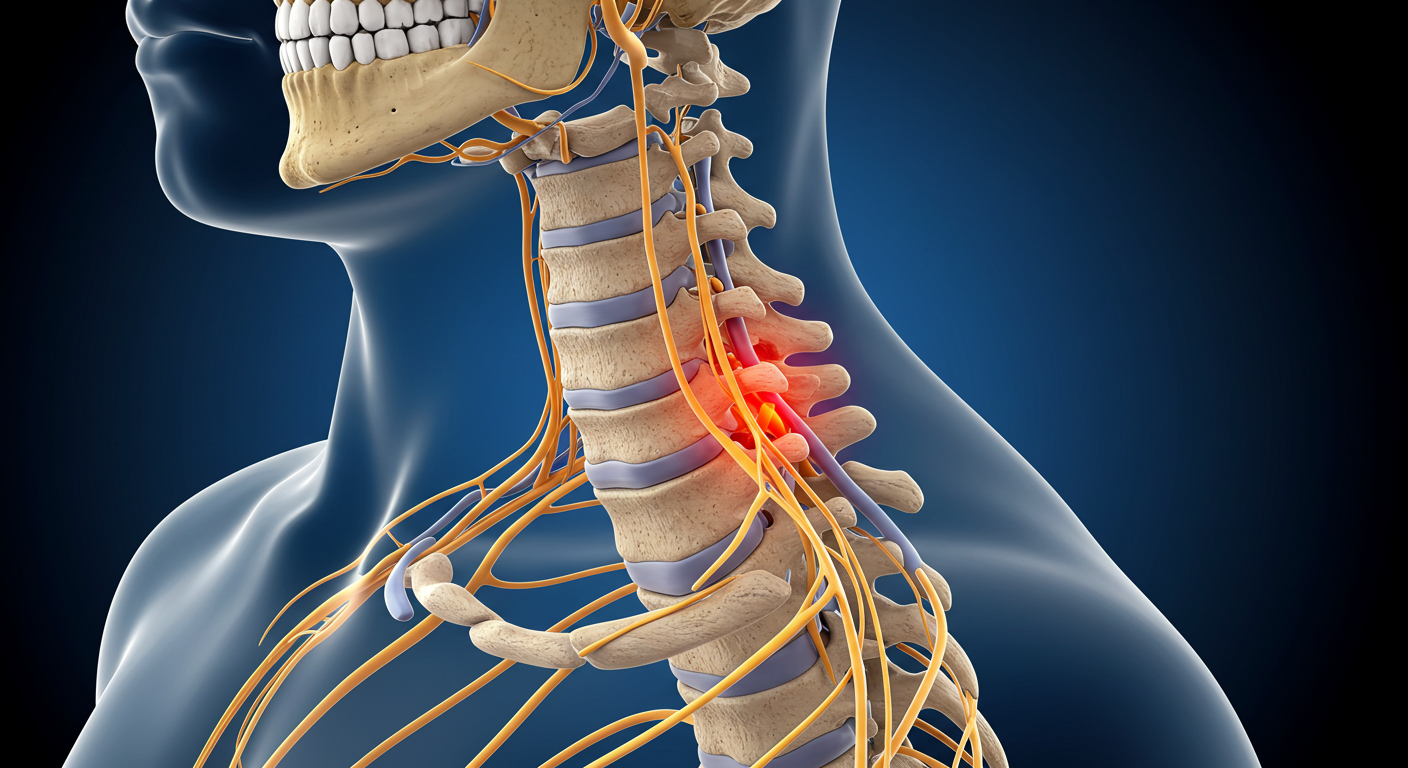
Spinal Sublaxation
A vertebral subluxation complex, commonly known as a spinal subluxation, occurs when one or more vertebrae lose their normal alignment or motion. This misalignment places mechanical stress on spinal structures—discs, ligaments, joints, muscles—often leading to pain, inflammation, and restricted mobility. Understanding what a subluxation is and why timely intervention matters is crucial to maintaining spinal health.
OVERVIEW
SYMPTOMS
Subluxation symptoms can vary widely, but often include chronic pain, muscle tightness or spasms, reduced range of motion, and nerve irritation. As wear and tear accumulate, you may also experience tenderness, inflammation, and overall spinal dysfunction—making everyday activities more uncomfortable.
-
-
Localized spinal pain or tenderness
-
Muscle spasms or tightness near the affected area
-
Reduced range of motion in the neck, back, or spine
-
Nerve-related symptoms such as tingling, numbness, or radiating pain
-
Inflammation or swelling in nearby tissues
-
Poor posture or visible misalignment
-
Persistent discomfort with daily movement or exercise
-
CAUSES
The main causes of spinal subluxations involve physical stressors—trauma, repetitive strain, poor posture, and improper lifting. These mechanical forces disturb spinal alignment over time, placing extra stress on the vertebrae, discs, and supporting soft tissues, often without immediate awareness.
-
-
Poor posture, including forward head or slouched sitting
-
Repetitive movements that strain the spine over time
-
Trauma or injury, such as car accidents or sports impacts
-
Improper lifting techniques or sudden twisting motions
-
Prolonged sitting or sedentary lifestyle
-
Weak core and spinal support muscles
-
Stress-related muscle tension affecting spinal alignment
-
DIAGNOSIS
Accurate subluxation diagnosis requires a detailed chiropractic evaluation. This typically includes posture analysis, spinal motion tests, and manual palpation to detect misalignment. In some cases, imaging like X-rays may be used to confirm structural changes and rule out other spinal conditions.
-
-
Chiropractic examination to assess spinal alignment
-
Palpation to detect restricted motion and tenderness
-
Postural analysis to identify imbalances or misalignments
-
Range of motion testing for affected spinal segments
-
Neurological evaluation to check for nerve irritation
-
Imaging (e.g. X-ray) when necessary to visualize subluxations
-
Functional movement assessment to understand overall spinal mechanics
-
FAQs
Q: What exactly is a vertebral subluxation?
A: A vertebral subluxation, or Vertebral Subluxation Complex, occurs when a vertebra loses its normal position or movement in relation to adjacent vertebrae. This misalignment places stress on the spine and surrounding tissues, disrupting nerve function and causing discomfort or dysfunction.
Q: Can vertebral subluxations go away on their own?
A: Sometimes minor subluxations may resolve with rest, stretching, or sleep—especially if caused by temporary stress or strain. However, persistent or recurring subluxations typically require professional chiropractic care to prevent further damage and ensure long-term spinal health.
Q: How do subluxations affect the rest of my body?
A: Your spine protects the nervous system, which controls every function in your body. When subluxations interfere with nerve communication, it can lead to digestive issues, fatigue, lowered immunity, poor sleep, and more—well beyond just back or neck pain.
Q: How can chiropractic care help with subluxations?
A: Chiropractors use precise, non-invasive techniques to realign the spine, relieve nerve pressure, and restore natural function. Addressing all five components of a subluxation can improve pain, mobility, and overall health.
Q: Can subluxations be prevented?
A: Not all subluxations are preventable, but healthy habits—like maintaining good posture, staying active, and managing stress—can reduce your risk. Routine chiropractic check-ups can catch issues early.
Q: What should I expect during a chiropractic evaluation?
A: Your chiropractor will conduct a thorough assessment, which may include a physical exam, review of your health history, and possibly imaging (like X-rays) to detect subluxations and tailor a treatment plan.
Q: Is chiropractic treatment safe for subluxations?
A: Yes. When performed by a licensed chiropractor, spinal adjustments are safe, gentle, and effective. Chiropractors are trained to minimize discomfort while promoting healing.
Q: How long will it take to see results from chiropractic care?
A: Some patients feel better after just one visit, while others need several sessions to experience lasting relief. Your recovery time depends on your condition, lifestyle, and how long the subluxation has been present.
Q: Will I need ongoing treatment for subluxations?
A: It depends on your body’s needs. Some patients benefit from occasional maintenance care, while others require more structured treatment. Your chiropractor will recommend a personalized care plan.

EVALUATION
A comprehensive subluxation evaluation addresses five key components:
- Pathophysiology – inflammation and biochemical changes
- Neuropathology – nerve root irritation or compression
- Myopathology – muscle spasms, fibrosis, or weakness
- Kinesiopathology – restricted spinal motion or misalignment
- Histopathology – tissue scarring or degenerative changes
By assessing each area, chiropractors can design a targeted treatment plan to restore spinal function.

CMT + THERAPIES
Chiropractic care for subluxation correction usually combines spinal adjustments (CMT) with supportive therapies. These may include soft-tissue massage, therapeutic ultrasound, physical therapy exercises, and acupuncture. This multi‑modal approach helps reduce nerve interference, improve soft‑tissue function, and promote overall spinal health.

PREVENTION + ERGONOMICS TIPS
To prevent subluxations, maintain optimal spinal alignment through proper posture, body mechanics, and routine care. Use ergonomic workstations, lift with your legs, and take regular stretch breaks. Incorporating core and postural strengthening, along with periodic chiropractic check‑ups, helps keep your spine resilient and aligned.
OUR ELITE APPROACH

STEP ONE:
PAIN RELIEF
Fix your pain without pills or surgery and get you back to life, sport, or work. We’re trying to get your pain under control and start you on your way to a full recovery.

STEP TWO:
RETURN TO FUNCTION

